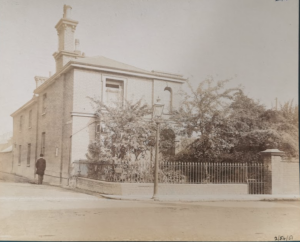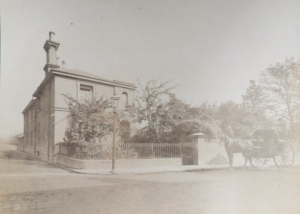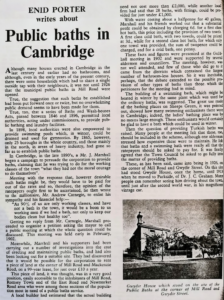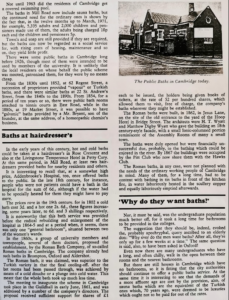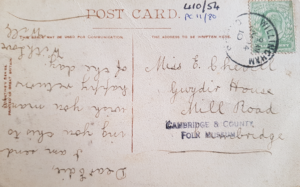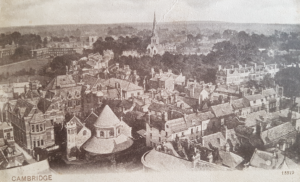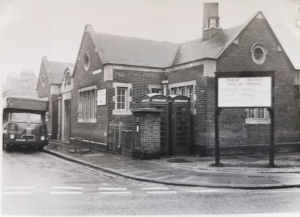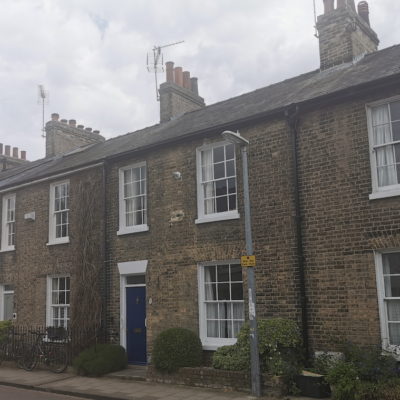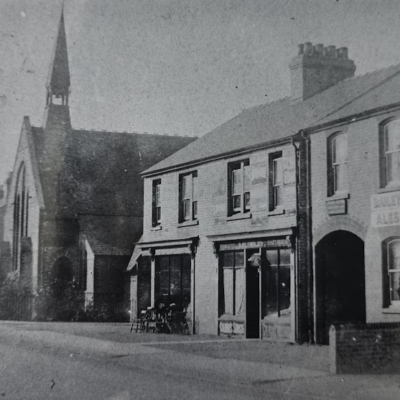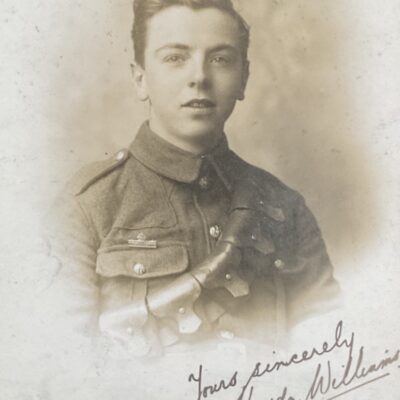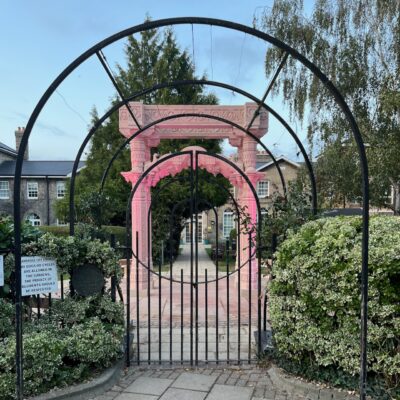Search by topic
- archaeology
- Building of Local Interest
- charity
- church
- crime
- dressmaker
- fire
- Great Eastern Railway
- Listed building
- Mapping Relief
- medieval
- oral history
- poverty
- Public House
- Rattee & Kett
- Religious House
- Roman
- scholar
- school
- Then and Now
- tudor
- women
- work
- world war one
- world war two
Search by text
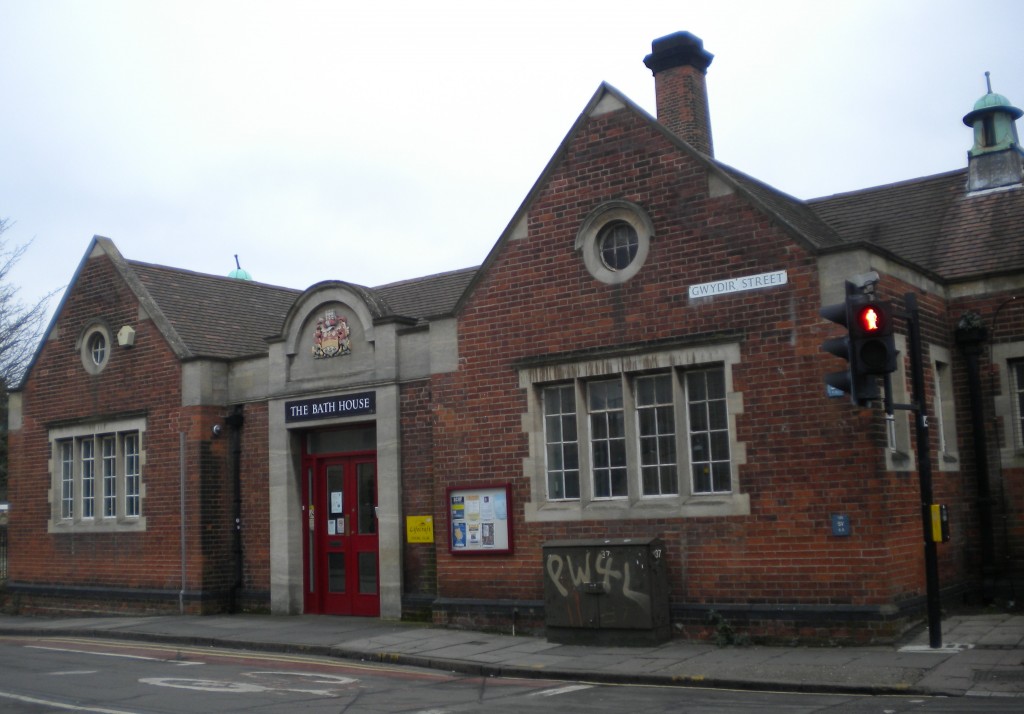 The Bath House on Gwydir Street. Image courtesy of Mill Road History Society.
The Bath House on Gwydir Street. Image courtesy of Mill Road History Society.99 (57) Mill Road, Gwydir House, The Bath House
Lots of lovely hot water!
Now popularly known as The Bath House, the building stands on the corner of Mill Road and Gwydir Street. Belonging to both streets, the site up to 1913 bore the postal address ‛99 Mill Road’; in 1914 it was redesignated as ‛[unnumbered] Gwydir Street’. The site has been occupied successively by two buildings: Gwydir House to c.1913, and the present building since c.1927.
The present building, formerly providing public baths to the local population, has since 1976 been a community centre. Although not a listed building it is considered to be a ‛building of local interest’ (BLI) and a ‛focal building’ within the Mill Road Conservation Area.
Building Report
Read the building report (PDF).
Watch Julia Ewans talk about the history of The Bath House:
Memories of The Bath House:
“Few houses had a bathroom and most had an outside toilet. There were public baths at the top of Gwydir Street and we would have a bath once a week! The 4d or 6d cost included a small towel and a small bar of carbolic soap. (Years later when the baths ceased to exist, saunas were installed, which was fantastic, sadly no longer).” – Hear more of Hazel’s memories of Gwydir Street here.
1970’s
1969.03.19 Cambridge Evening News: The affluent age is coming to Gwydir Street public baths, a bleak brick building off Mill Road, Cambridge, which was opened in 1927 for the use of cleanly citizens without baths of their own. A scheme to turn part of the baths into a sauna establishment has been accepted unanimously by the city council’s Commons Committee.
The baths became a social centre for Mill Road residents, even after indoor plumbing reached their own homes, and a sauna establishment was installed at The Bath House in the early 70’s.
Dolly Moy, 1973:
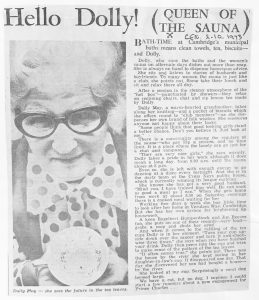
Dolly Moy who ran the municipal baths and women’s sauna in the 70’s tells the Cambridge Evening News about her work and bath-time gossip. Image courtesy the Cambridgeshire Collection.
The Bath House Neighbourhood Centre, 1979:
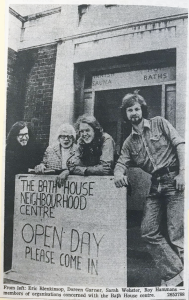
Work begins to transform the Bath House into a community centre. Image 1978.09.18 Cambridge Evening News.
Eric Blenkinsop, Doreen Garner, Sarah Webster and Roy Hammans are featured in a 1973 article in the Cambridge Evening News, working with other volunteers to convert the old baths into a neighbourhood centre, housing Friends of the Earth, the Community Relations Council and St Matthew’s Neighbourhood Association.
Census Data
1861
Rolfe Leeson, 36
1871 Gwydir House
John Dunn, 47, MA & owner of coal mines, b Suffolk
In 1902 took place the funeral in Little Shelford of Arthur Tempest Blakiston Dunn. It is described in the CDN 25.2.1902. “The late Mr Dunn was the son of Mr Dunn a well known tutor at St John’s College. He was born at Cambridge, his parents living for some time at Gwydir House, Mill Road. They subsequently removed to Shelford. As a boy Mr Dunn used to play cricket and football on Parker’s Piece. After leaving Eton he became one of the foremost figures in University sport. He was not only a good footballer and cricketer but a shining light at the ADC. He was one of the principal movers in the resuscitation of the Cambs Football Club about 1883.”
1881 (Gwydir House, no number) [Boarding school]
George Johnson, 34, teacher MA, b Wisbech
1891 (57)
Alfred R Sieveking [?], 28, surgeon, b London
1901
Edwin S Wood, 51, physician and surgeon, b Monmouth
1913 vacant
Circa 1910 one of the occupants of Gwydir House was Miss E Chevill:
24/10/1923 Sir – Permit me to enter a strong protest against Cambridge town council “improvements”. Take the following, with all of which we are now threatened. The detestable proposal to improve St Mary’s Street by lopping off nine feet of church yard; the very pleasant little old world Emmanuel St to be made banal by altering its lines and proportions; Coe Fen to be utterly ruined for ever by cutting a new road for motors. And who in their right mind would dream of building public baths in so outlying and unattractive a suburb as Gwydir Street. – Delta (Cam.News)

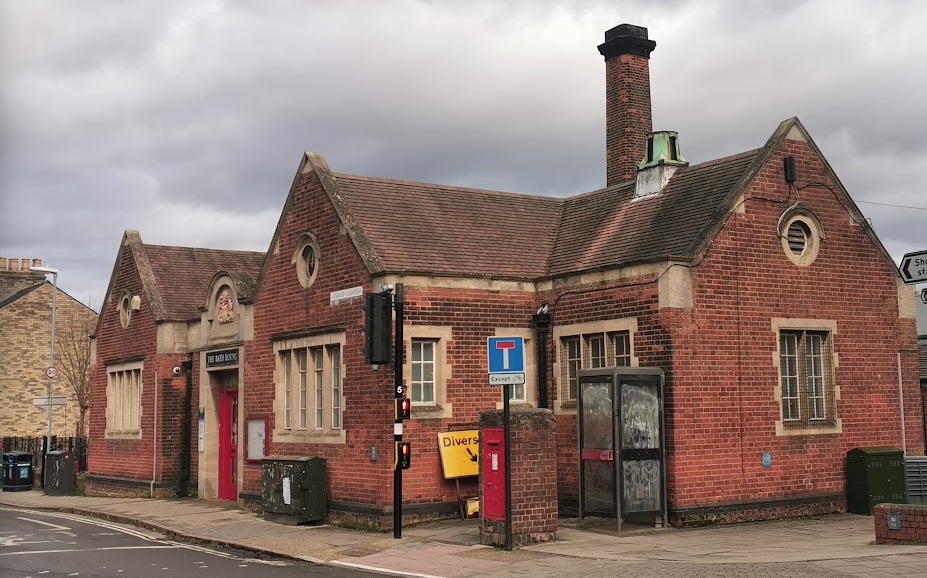
1975
In 2024 Deborah Smith sent this reminiscence:
In 1975 I was a student nurse living in Covent Garden. A friend and I heard that the public baths were closing so we thought we’d give it a go, just so we could say we’d done it. Don’t remember what it cost but in we went to be greeted by an Irma Press lookalike, who gave us each a towel and some carbolic-y pink soap. The cubicles each held a very clean white enamel bath. Irma put a tube-like plug in each, turned on the water, remotely as far as I recall – presumably to control how much went in – and set the clock on the wall at the end of the bath. 10 minutes allowed. So we scrubbed away and emerged pink and glowing, but very glad we had a bathroom with lots of nice hot water . End of an era.
Further information
Contribute
Do you have any information about the people or places in this article? If so, then please let us know using the Contact page or by emailing capturingcambridge@
License
This work is licensed under CC BY-NC-SA 4.0






